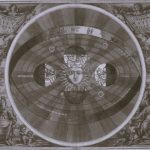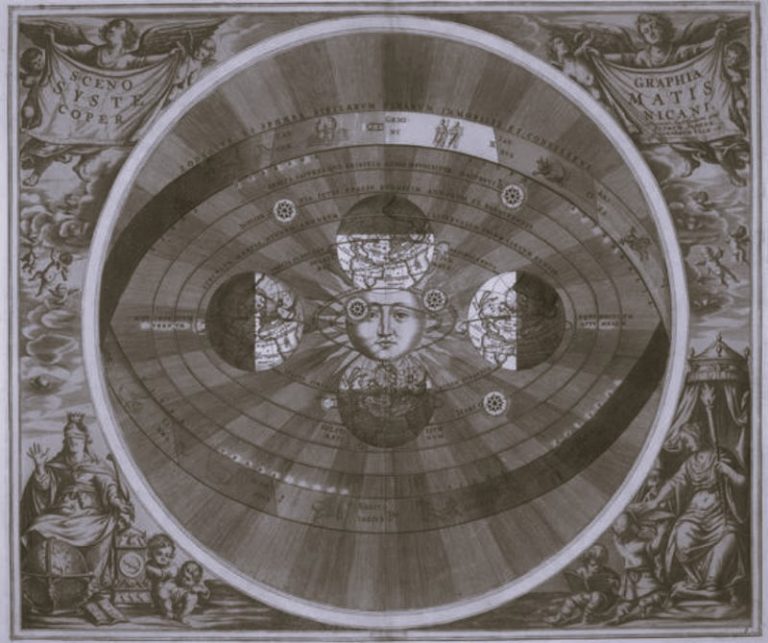
Marine life of all kinds, real and imagined, was frequently depicted on frescoes, pottery, mosaics and coins. Here are 24 images with a sea theme from the Bronze Age to the 3rd century CE, encompassing Egyptian, Minoan, Mycenaean, Greek and Roman works.
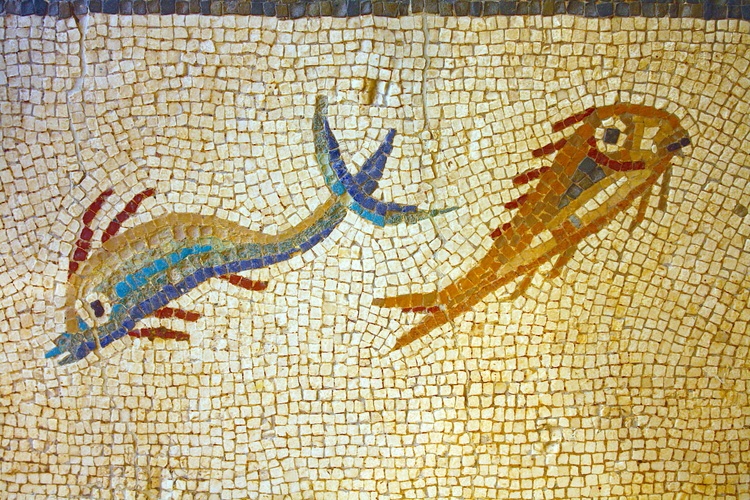
Above: A detail of a Roman mosaic showing fish. Tarraco, 3rd century CE. (Archaeological Museum, Tarragona, Spain)

Above: A Minoan octopus, detail from a New-Palace period (1500-1450 BCE) Cretan Clay askos with ‘Marine Style’ decoration, (Heraklion Archaeological Museum, Crete)

Above: A silver tetradrachm from Kos, 300-190 BCE. O: Hercules, R: Crab. (Alpha Bank Numismatics Museum, Kerkyra, Corfu)
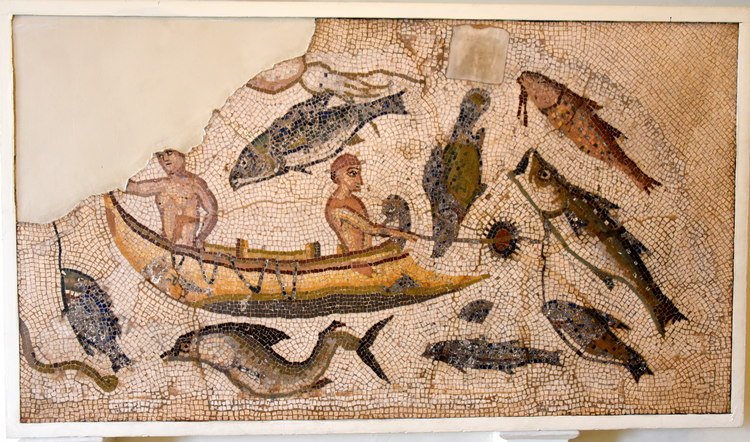
Above: A fragment of a floor mosaic depicting a fishing scene. From Utica, modern-day Tunisia. Late 3rd or 4th century CE. (The British Museum, London).
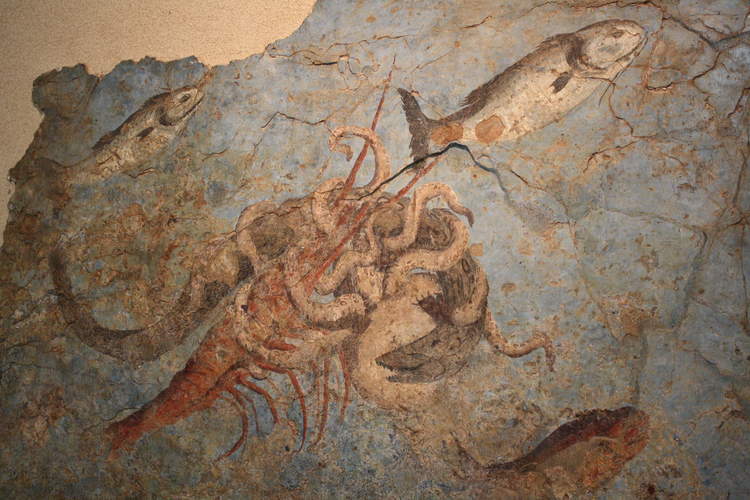
Above: A fragment of a Roman wall painting depicting sea fauna. From Rome, 125-150 CE. (Palazzo Massimo, Rome).

Above: A Greek ceramic plate used for serving fish and seafood. A central depression collected any excess oil. The shape was popular in both Attica and Magna Graecia. Attic dishes almost always have the fish painted with their underside towards the outer edge whilst in southern Italy the underside of the fish was nearest the plate’s centre. This example is from Attica, 400-350 BCE. (Art Institute of Chicago).

Above: A detail of the dolphin fresco, the Minoan palace of Knossos, Crete, (1700-1450 BCE).

Above: This mosaic with an octopus is made of limestone and dates from the 2nd-3rd century CE. It is from Villaquejida (León), Spain. (Museo Arqueológico Nacional, Madrid).

Above: A fresco depicting flying-fish from Phylakopi, Melos. Late Cycladic, 16th century BCE. (National Archaeological Museum, Athens).

Above: This mosaic is from the “House of Menander” in Pompeii and depicts two African men fishing. The work dates to the 1st Century CE and is currently in the National Archaeological Museum of Naples in Italy.

Above: A gold Mycenaean brooch in the form of an octopus, Mycenae, mid 2nd millenium BCE. (Archaeological Museum, Mycenae).

Above: Mosaic from Sufetula, Tunisia.

Above: Silver stater coin of Tarentum (modern Taranto), a Greek colony in southern Italy founded by Sparta. Taras riding a dolphin. 5th century BCE. (Archaeological Museum of Altamura, Italy).

Above: A wooden coffin shaped in the form of a Nile bolti fish and containing the mummified remains of a fish. Dynasty XXX-XXXI, 4th century BCE. (Egytpian Museum, Turin).

Above: A large storage pithoi decorated with dolphins and lilies, 17th century BCE, Akrotiri. (Museum of Prehistoric Thera, Santorini).

Above: A Roman floor mosaic dating to between 350 and 375 CE and depicting fish. Food was a popular subject in mosiacs throughout the Roman period. Provenance: Toragnola, Rome. (Vatican Museums, Rome).

Above: The Fisherman Fresco from Akrotiri on the Aegean island of Thera (Santorini). The male may actually be a youth offering fish as part of a religious ceremony rather than a fisherman. From Room 5 of the West House, c. 17th century BCE. (National Archaeological Museum, Athens).
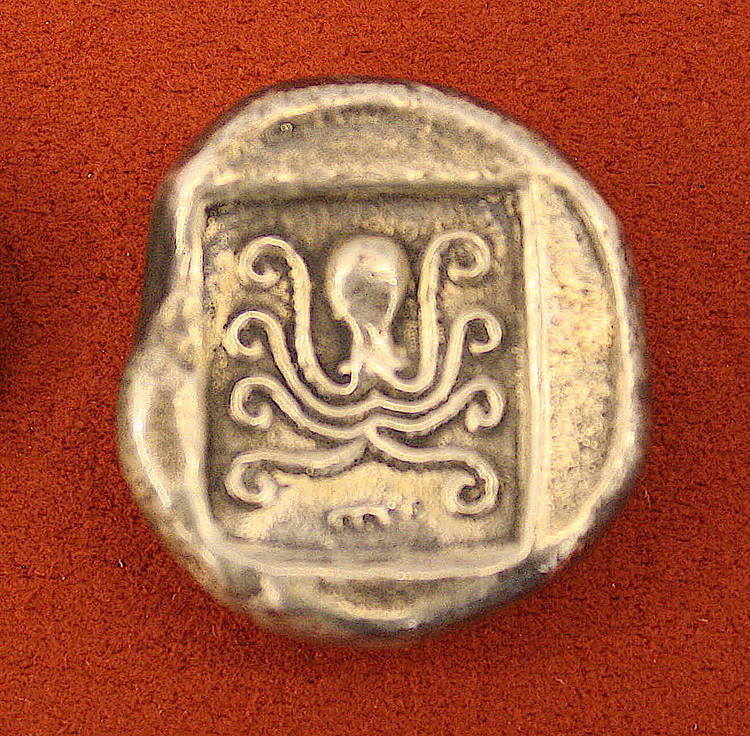
Above: Silver tetradrachm from Eretria Euboea, c. 485 BCE. O: Cow, R: Octopus in incuse square. (Alpha Bank Numismatics Collection, Kerkyra, Corfu).

Above: This mosaic was part of the floor of a grotto in Palestrina, near Rome, Italy. It dates to c. 100 BCE and is an example of the interest that Roman artists and elites began to take in Ptolemaic Egypt during the 2nd and 1st Centuries BCE. It portrays life on the Nile during a flood and its figures include exotic animals, Greek Ptolemaic soldiers, and Aethiopian hunters. The mosaic portrays a variety of landscapes found in ancient Egypt as well as the mixed Egyptian and Hellenistic architectural styles which were prevalent at the time. (National Archaeological Museum of Praeneste, Palestrina, Italy).

Above: Mosaic with a ketos (sea monster – Latinized as cetus) found at Caulonia (Monasterace) in the Casa del Drago, 3rd century BCE. (Photo taken at the “Monsters. Fantastic Creatures of Fear and Myth” exhibition, Palazzo Massimo alle Terme, Rome).
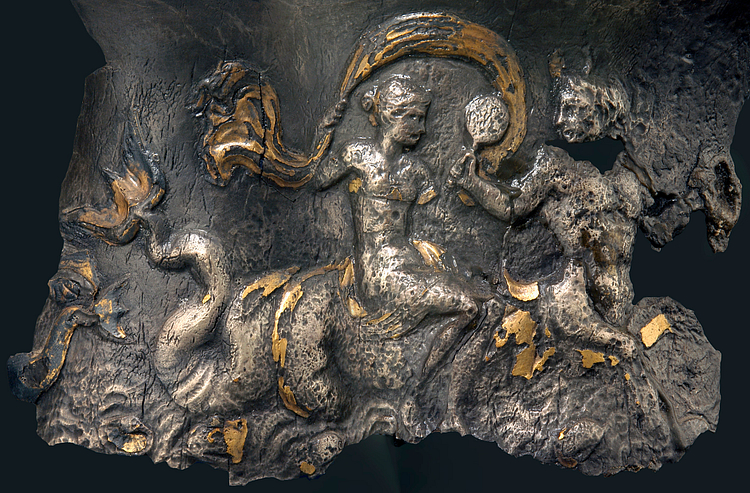
Above: A fragment of a gilded silver wine jug from southern Spain (10.5 cm in height; ca. 1st cent. BCE; APM inv. no. 15.375). The image is “rolled” out to compensate for the curvature of the vase neck. The scene illustrates a Nereid riding on the back of a sea centaur. Image courtesy of the Allard Pierson Museum, Amsterdam.

Above: Roman fresco depicting a nereid reclining on a sea-panther. From Villa Arianna at Stabiae. Naples National Archaeological Museum. 1st century CE.

Above: Roman mosaic from the 2nd century CE depicting Odysseus and the Sirens. Displayed in the Bardo Museum in Tunisia.

Above: A 3rd century CE Roman sarcophagus depicting the prophet Jonah about to be swallowed by a giant fish, a story recounted in the Old Testament’s Book of Jonah. (Vatican Museums, Rome).
Originally published by the Ancient History Encyclopedia, 12.02.2016, under a Creative Commons: Attribution-NonCommercial-ShareAlike 3.0 Unported license.



